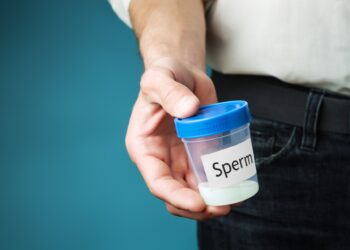Bed sharing and breastfeeding are two sides of the same coin. They work in coordination with each other as babies and mother are connected to each other with an invisible cord even after the umbilical cord is detached. This is especially true during the wee hours of night when the baby is most vulnerable.
Baby’s stress levels are piqued at night, the heart rate is less stable and temperatures vary when they can’t feel their mother near them. On the other hand the mothers’ are unable to get sound, peaceful sleep when they’re separated from their little ones.
Bed sharing makes them more relaxed, secured, comfortable and at ease.
Babies don’t have to cry on top of their lungs to get their mother’s attention and the mother doesn’t need to drag herself out of the bed at night. Bed sharing also stimulates milk production as the baby is being fed on demand.
To enrich the milk and make it full of vitamins and antioxidants mothers can add breastfeeding supplements to their diet for better quality milk. Almost two-thirds of the breastfeeding mothers share beds with their babies, maybe due to convenience, desperation or simply it’s too hard to resist a sound sleep at night.
Even though sharing a bed with a baby under a year is strictly condemned by doctors and authorities, many mothers are guilty of not telling the truth to their doctors upon asking.
Not sharing bed with the baby is easier said than done, authorities promoting this tell not to do so, they also explain the dangers related to it but they don’t give mothers and children a solution to the problem, which is, how are mothers supposed to feed the baby at night?
Mothers are forced to face this dilemma where sleeping with their baby is putting the baby at risk and feeding the baby on couches, recliners and sofas are also out of question at night. This leads to an exhausted, drained and frustrated mother and a distressed, deprived and disturbed baby.
The two main reasons for denouncing bed sharing is the fear of suffocation and SIDS (Sudden Infant Death Syndrome). Although not all babies are equally at risk from these reasons, every mother is concerned about their child’s safety and doesn’t want to risk it at any cost. Suffocation happens mainly due to lack of oxygen, from a congested nose or if the baby is tightly jammed between pillows.
Whereas SIDS is an unexplained death of a baby under the age of 1, no medical reason is available to explain the cause of death. In order to avoid any of the two above mentioned reasons parents must observe The Safe Sleep Seven.
The Safe Sleep 7
New parents must be taught the importance of the Safe Sleep Seven and how to make their bed sharing experience safer and secure from risks like suffocation and SIDS. In the Safe Sleep Seven there are 7 boxes to be checked in order to be sure of the safety of the child sleeping with you.
1: Non-smoking Mother
The major reason for SIDS is considered to be smoking. Even if the mother or parents don’t smoke in the same vicinity as the baby, it’s still a big hazard. Smoking during pregnancy makes the new born baby even more at risk from SIDS, right from the birth. The more the baby comes in contact with the smoke the more the higher the risk factor raises. So bed sharing with a smoking parent is out of the question.
2: A Vigilant and Responsible Adult
There must be a responsible, vigilant and well aware caretaker appointed to look after the baby at all times. If the mother takes drugs, uses sedative medicines or is under the influence of alcohol then the baby mustn’t share the bed with her. To avoid SIDS, always have an alert and watchful adult look after the baby.
3: Bottle-Feeding
Bottle feeding spikes the risk of SIDS ten folds. It can cause suffocation; the baby can choke on the milk and bottle feeding at night can be very difficult as the mother has to stay alert which is quite tough to do in the wee hours of night. The cuddle curl of the mother protects the baby from all such risk factors.
4: Preemies
Preterm babies, babies born with some serious illness or babies facing recurring health issues face an increased risk of SIDS. As they are weak, sick and don’t have their full strength to cope up with the situation they fell for the risks more than often.
5: Sleeping Tummy-Side-Down
Babies who like to sleep on their tummies immediately after feeding are at a higher risk of SIDS. This can cause them to vomit, causing them to choke or gag on it while asleep. Breastfeeding babies are safe from this because they usually sleep on their sides, close to the mother.
6: Overheating Due to Layered Clothing
Swaddling the baby into layers of clothes can cause the body temperature to risk significantly, thus increasing the risk of SIDS. No need to dress your baby any warmer than you dress yourself, in fact babies’ loves the idea of free arms and legs to find a better position at night.
7: Safe Bed Surface
The surface of the bed you’re sharing with your baby must be firm. The placement should also be safe. The mattress should be sturdy so that your body weight doesn’t sink the baby in the gap. It shouldn’t be too small or too big. There shouldn’t be sharp corners, cracks or crevices near the bed to ensure the safety of your precious little bundle of joy.
Conclusion
Babies who sleep in cots and cribs at night tend to wean off from the breast milk early. They also feed less as they are away from the smell of their beloved mother. Another bad effect is the dip in the milk supply of the mother due to the long interval in nursing sessions. Taking lactation treats and breastfeeding supplements do increase the production but it’s just an added expense and work in the already hectic routine.
Mothers who breastfeed their babies at night get a sounder sleep. They stress less as they can feel the baby near them at times and most of all easier nursing. They don’t have to jug down breastfeeding supplements to increase milk supply, they just have to nurse, simple!







